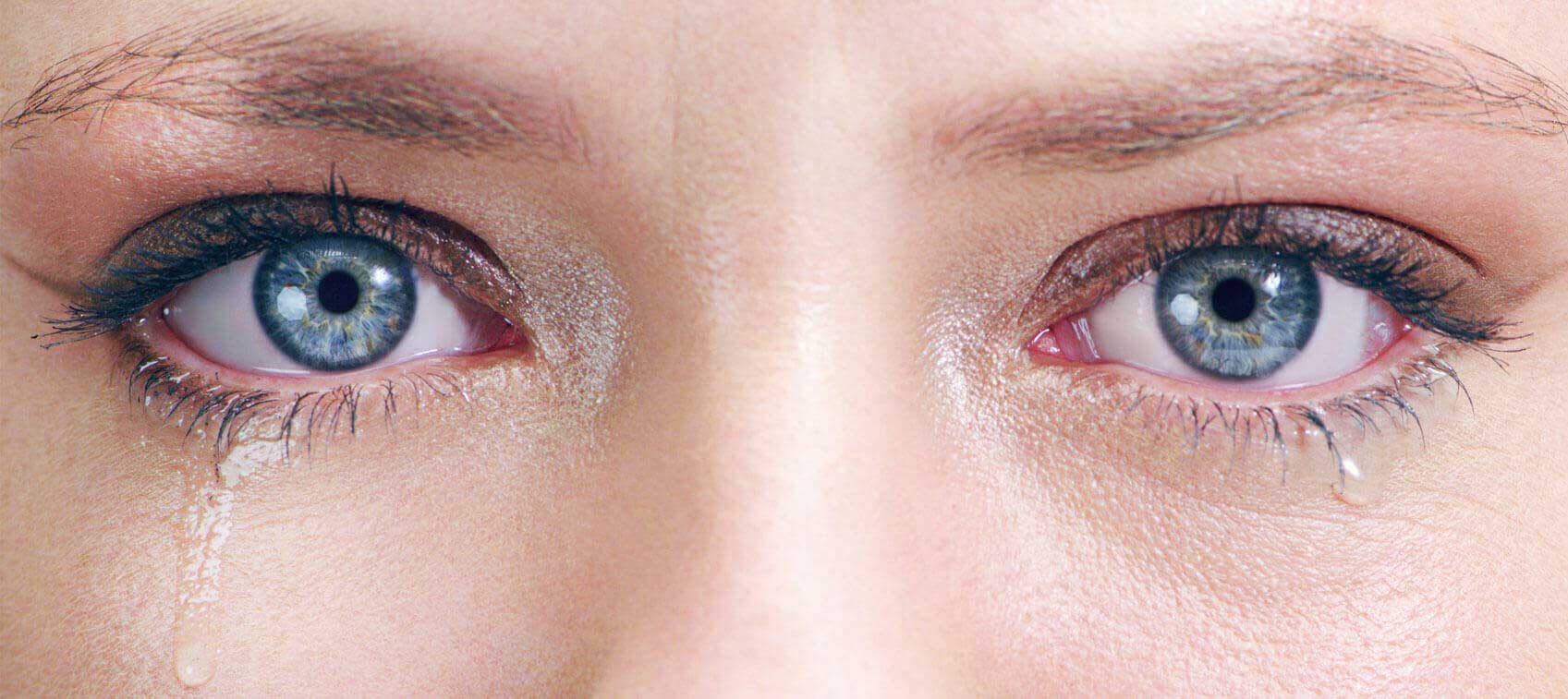
Most of us shed tears when we’re heartbroken, grieving, or in extreme pain. Some of us get teary when we’re happy or when we’re moved by an emotionally charged story, TV show, movie, or commercial. (They don’t call them tearjerkers for nothing.)
For others, however, the tears flow for no discernible reason. Symptoms of this condition, called epiphora, range from slightly watery eyes to tears running down the face. Epiphora can be annoying and embarrassing, and when the waterworks really turn on, it can interfere with your eyesight.
What Is Epiphora?
Tears are essential. They keep your eyes lubricated, clear out irritants, and deliver antibodies that protect against bacteria and viruses. But too much of a good thing can be, well, too much—as anyone with epiphora symptoms knows all too well.
Epiphora is a medical condition characterized by excessive tearing. In addition to watery eyes, it may be accompanied by redness, swelling, irritation, and pain. Furthermore, when your eyes are brimming with tears, your visual focus is impaired, which can interfere with reading, driving, working on a computer, and other activities.
You naturally produce more tears when your eyes are irritated by dust, smoke, wind, chemicals, or fumes (think onions) or when you’re dealing with inflammation or infections of the eye or eyelid. People who suffer from seasonal allergies also often experience symptoms of watery eyes, along with sneezing, congestion, and runny noses.
In these cases, tearing is not unexpected and it generally resolves on its own or with appropriate treatment. Epiphora causes, however, are less evident and more persistent.
A Drainage Problem
Epiphora is often a drainage problem. Tears are produced in the lacrimal glands in the upper-outer edges of the eye sockets and drain into the nose through tear ducts located in the inside corners of the eyes.
If the ducts can’t handle all the tears made by the glands, they well up in the eyes or course down the face. Potential contributors include:
- Clogged tear duct opening: Also called punctal stenosis, this involves only the opening of the duct.
- Tear duct blockage: Obstruction may be further down the duct that drains tears into the nose.
- Droopy lower eyelid: A lax eyelid, often age-related, fails to direct tears towards the tear duct for drainage.
An Unexpected Cause of Watery Eyes
If the drains are open but you still have watery eyes, it’s usually due to an overproduction of tears, and a common—and somewhat ironic—cause is dry eyes.
Dry eye syndrome, which affects nearly 5 million Americans, has many underlying causes, including environmental irritants, drug side effects, autoimmune diseases, and simply aging. Whatever the reason, it involves disruption of some aspect of tear production.
In many cases it has more to do with quality rather than quantity. If tears don’t contain enough lipids (oils that form a thin film to keep them from drying out), they evaporate too rapidly to keep the eyes moist and lubricated. In response, the tear glands step up production, which may overwhelm the drainage ducts—and the tears start flowing.
How to Treat Epiphora
Watery eyes often clear up on their own. If they don’t, several effective epiphora treatments are available.
- Open clogged or blocked tear ducts: A quick office-based procedure, using just a local anesthetic, effectively opens superficial tear duct blockages. Obstructions further down the tear duct require more involved surgery under general anesthesia.
- Lift lax lower eyelid: Surgery to tighten a droopy eyelid allows for proper tear drainage—and as an added bonus, it lifts sagging skin, making it a popular cosmetic procedure.
- Treat dry eyes: Artificial tears eye drops, warm compresses, and omega-3 (fish oil) supplements significantly improve signs and symptoms of dry eyes, which may well result in improvements in epiphora.
Keep an Eye on Vision Health
Everyone—but especially those dealing with epiphora, macular degeneration, cataracts, or other eye problems—should take steps to protect and enhance overall vision health.
In addition to regular exercise and a healthy diet with lots of leafy greens, berries, and other foods rich in protective antioxidants, do your best to protect your eyes against excessive, potentially damaging blue light exposure from LED lights and digital screens and devices.
I also recommend the following supplements:
- Lutein 20–40 mg
- Zeaxanthin 4–8 mg
- Beta-carotene 4,500–6,000 mcg
- Zinc 30–55 mg (balanced with copper 2–4 mg)
- Vitamin C 600–1,000 mg
- Vitamin E 400 IU
Other nutrients with proven benefits for the eyes include bilberry, lycopene, N-acetyl-cysteine, and taurine.
Save Your Tears
Epiphora may not be a vision-threatening disorder, but it most certainly impacts quality of life. Try these therapies—and save your tears for the things that matter.


